
At the endpoint of the Afobaka paved road from Paramaribo, past the abandoned aluminum processing plants, stands Atjoni, a small town in central Suriname. The town’s quay is a busy hub, visited by Saamaka (also called Saramaka) people from the nearby villages who travel by boat to purchase supplies from Atjoni’s Chinese-owned supermarkets. It was November 2021, and I was headed to the Saamaka Maroon village of Pikin Slee, after driving from Suriname’s capital of Paramaribo. Before embarking on the Upper Suriname river, I stocked up on snacks for the two-hour boat ride with my boatman Jacob who is from Kaajapati, one of the nearby Saamaka villages that dot both sides of the river banks. Although we were technically in one of Suriname’s two short dry seasons, a thunderstorm broke, drenching us as we arrived in Pikin Slee. I was there to meet Saamaka village captain Wazen Eduards.
Captain Eduards, along with University of Suriname law student and Saramakan Hugo Jabini, began organizing against logging on Saamaka ancestral lands in 1996, and in 2009 they won the Goldman Environmental Prize for their efforts. Foreign logging companies, many of them from China, were destroying the forests that have traditionally been part of Saamaka territory and where many Saamaka grow food. Eduards and Jabini organized many meetings in the nearly 70 Saamaka villages, home to about 25,000 people, affected by the logging. They also set up the Association of Saamaka Authorities (Vereniging van Saamaka Gezagsdragers, or VSG) to promote their land rights, map their territories, and protect the Saamaka’s way of life.
VSG submitted petitions to stop logging to President Ronald Venetian and his government, but they were ignored. Since the Saamaka were not able to obtain justice in Suriname, the VSG filed a claim with the Inter-American Commission of Human Rights. The commission concluded that the state had violated the Saamaka people’s rights to property and had failed to recognize their collective rights. The case was passed to the Inter-American Court of Human Rights in San José, Costa Rica for adjudication. On paper, the Saamaka triumphed in the court’s November 2007 judgment. Reparations were mandated: Suriname had to provide $675,000 of monetary damages to the VSG, as well as reform legislation to delimit and grant collective land titles to the Saamaka people. The decision also ruled that the Saamaka had the power to give or withhold permission and must give free, informed, and prior consent with regards to development or investment projects that may affect their territory.
Almost 15 years after the court’s judgment, I wanted to talk to Eduards to find out whether things had actually changed, and how the Maroon communities were faring since that legal win.
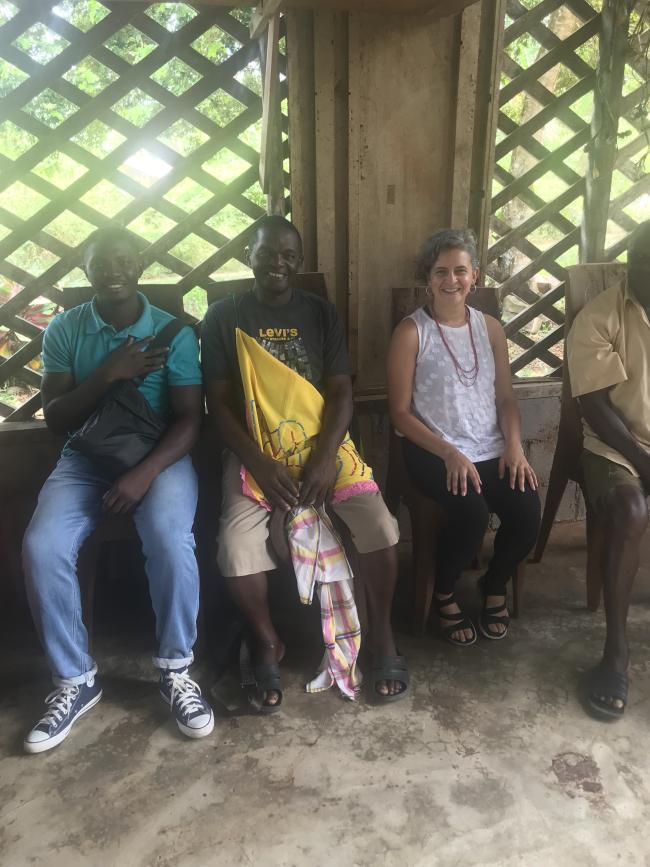
The story Eduards told me is one that showcases Maroon communities’ most recent struggle against the Surinamese state. Maroon communities were created in colonial times by enslaved peoples of African descent who fled the brutality of plantation life for freedom in the rainforest. They not only survived in a new hostile environment, but they created their own vibrant culture with their own politics, religion, and languages.
Maroons in the South American rainforest in Suriname and French Guiana continue to battle encroachment by miners and loggers given concessions by the state—including the building of roads that would intersect their traditional hunting grounds and farmlands. Saamaka Maroons have fought for the management of their ancestral lands and resources since before Suriname’s independence from the Netherlands in 1975.
A History of Struggle
Suriname is the smallest sovereign nation in South America. It is also the youngest, the most forested, and one of the most diverse. It has the largest Maroon population who, along with Amerindians, mostly live in the forested interior. East Indians, Chinese, Javanese, and Blacks live in and around the capital of Paramaribo, near the Atlantic coast.
There are six Maroon groups in Suriname, each with their own culture and language. The two largest, with around 50,000 people each, are the Ndjuka, or Aukans, and the Saamaka; then the Matawai, Paamaka, and Aluku with about 6,000 people each; and the smallest group, the Kwinti with 500.
Suriname was an English colony from 1650-1667 when, in the Treaty of Breda, the Dutch exchanged Manhattan for Suriname. Sephardic Portuguese Jews settled the area along the Suriname River and formed a community called the Jodensavanne (Jewish Savanna). They built sugar cane plantations and brought over enslaved West and Central Africans to cultivate and produce the commodity crop. Many of those people escaped the brutality of slavery and formed their own Maroon communities in the rainforest. The Maroons fought fiercely to maintain their freedom, despite attempts by slave owners' militias to hunt and recapture them. The very existence of free and autonomous Maroon communities was a direct affront to the Dutch colonial system built upon a plantation slavery economy.
The Saamaka made the Upper-Suriname River their home and were granted freedom and autonomy by the Dutch in 1762, a full 101 years before slavery was abolished in the colony. But their fight for land rights has continued and intensified in the 20th century.
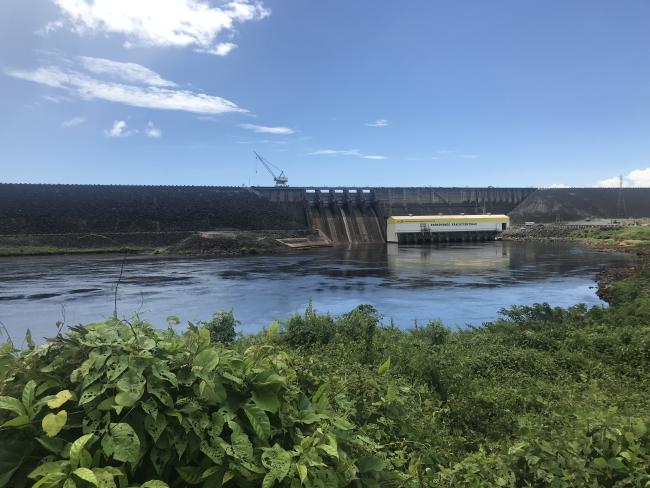
Between 1961 to 1964, the construction of the Afobaka dam by the Suriname Aluminum Company (Suralco) displaced thousands of Maroons, mostly Saamaka. According to a World Bank report, the Afobaka Dam inundated about 160,000 hectares of tropical rainforest while providing relatively little electric generating capacity (only 189 megawatts). For comparison, the Grand Coulee Dam in the United States displaced as many people for the production of seven gigawatts of electricity, over 36 times the amount of power produced at Afobaka. The displaced Saamaka were forced into transmigration villages lacking in resources or moved their villages up river. Others crowded into other villages, causing conflicts over land.
Since its 1975 independence from the Netherlands, the Surinamese state has upheld colonial practices by continuing a civil and environmental battle against Maroon communities. Ethnic tensions between Surinamese multi-ethnic coastal communities and the rainforest Maroons came to a head in the 1980s, when a civil war broke out between the Surinamese national army and Maroons. Mass atrocities committed by the Surinamese military against Maroon citizens have been reported, but there has been no national reckoning or truth and reconciliation commission to give closure to survivors and families of victims.
The Fight Continues
When I visited Captain Eduards, we communicated through an interpreter; the Saamaka speak a creole variant called Saramaccan or Saamáka. Visiting Maroon villages and speaking with village authorities involves a certain set of formalities. In a communal meeting, one speaks directly to the Basiya, one of the village officers, who then addresses questions in a specific rhetorical art to the Captain. In Pikin Slee, I spoke with Basiya Edje, a Rastafari master carver and one of the creators of the villages’ excellent Saamaka museum.
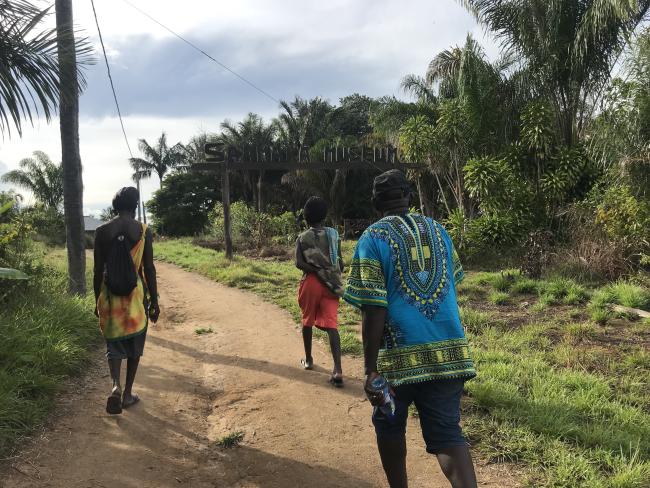
I asked Eduards what had happened since the court’s decision and asked if the state paid reparations after the court ruling. He said, yes, but was not sure it was the stipulated amount. What about the coalition building he did in 2008 when he visited more than 60 villages, I asked. Were those villages giving up on the state recognizing their land rights? Eduards explained that some Saamaka communities, enticed by middlemen, have ceded their lands, and others are interested in forest entrepreneurship and road building that would connect Saamaka villages to Paramaribo and the outside world. Such a road would facilitate the transport of lumber, but also leave Saamaka culture more vulnerable to ecocide. Eduards is against these concession grants—he demands land rights first.
I asked the one woman present at the meeting about the concerns of women in the villages; she emphasized the importance of sticking with the Captain on the land rights issue. She added that she would like to see more educational opportunities for children and adults, who are mostly non-literate, and training in small-scale agriculture.
The Saamaka case was praised for increasing Indigenous peoples’ cultural and land rights. In 2007, the Inter-American Court ruled that companies granted concessions by tribal and Indigenous groups must “reasonably share the benefits of such projects.” But that is rarely the case, Eduards said.
Since my visit in November 2021, inter-community conflict, as well as between some communities and logging companies, has grown as loggers intensify their attempts to access Saamaka territories. In February, the Surinamese news website Culturuu.com reported that Saamaka unity against logging efforts had been broken, as Palmeras Timber Processing made plans to build a bridge in the Upper Suriname river area. Captain Carlo Sampi claimed that his village had decided in a kuutu (where decisions are made by reaching consensus) that they wanted the road. However, some captains say that Sampi lied, arguing that there was never a kuutu and that Sampi made agreements with Palmeras for his own benefit. Sampi, however, maintained that those present during the kuutu massively supported the bridge’s construction, because Palmeras guaranteed not to harvest wood in Saamaka land and promised to establish a development fund for the Saamaka people.
This July, I returned to Suriname and spoke to a group of Rastafari carvers to get clarification on the Palmeras situation. According to them, Sampi wanted to fill his pockets with money, and the logging company is willing to oblige. According to Basiya Edje and other officers, other villages do not agree with Sampi’s tactics. No one wants a bridge or road. Basiya Edje underscored that if a bridge were built, companies would start logging Saamaka forests and threatening Saamaka livelihoods, which are intertwined with the forest.
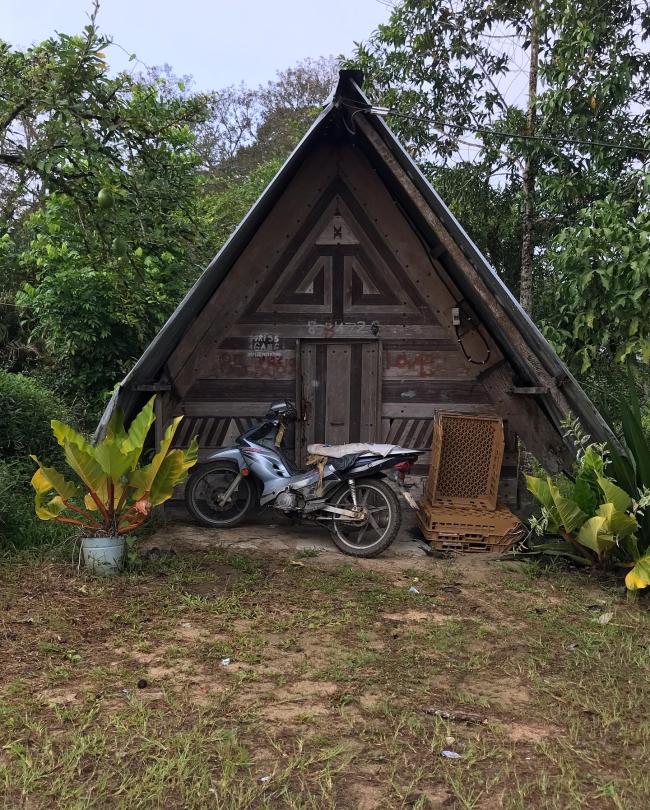
The situation in Paramaribo and the rest of the county has been tense in the last few months. Protesters blocked the Afobaka road in response to inflation, failed economic policies, and charges of nepotism and corruption against President Chandrikapersad Santokhi. In the Brokopondo district, villagers complain about blackouts and internet disruptions, despite the fact that they live next to the dam. The Suriname Herald reported that protesters barricaded the Afobaka road on July 25 because “most of the Brokopondo district does not actually benefit from the business that uses the road.”
Moreover, this year’s rainy season wreaked havoc on the region. Residents in the Brokopondo district are angry that the hydroelectric company opened up all five gates of the dam and released water from the filled Afobaka reservoir, thereby flooding the villages downstream from the dam. Houses and villages were underwater for months, and compensation for the flooding has been decreed to a measly 2000 Surinamese dollars per resident (less than $100).
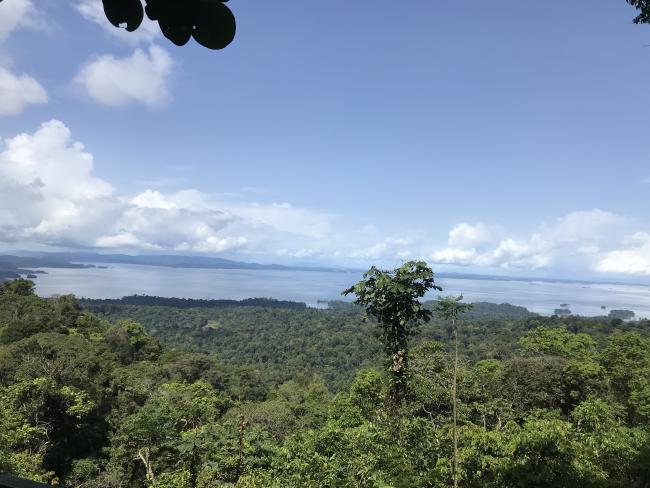
While Saamaka are struggling against logging, Indigenous groups in Suriname battle mercury pollution associated with gold mining. Suriname is the only country in the Western Hemisphere that does not have legislation to recognize and protect the internationally recognized rights of Indigenous and tribal peoples. The Association of Indigenous Villages of Suriname (VIDS) has been working with KAMPOS, the organization representing all Maroons of Suriname (each letter represents the name of one tribal Maroon group on the Draft Act on Collective Rights of Indigenous and Tribal Peoples). This October, there are two bills before Suriname’s parliament that seek to recognize the rights of Indigenous peoples and address mercury pollution. According to Marie Josee-Artist from VIDS, the draft act, which represents the lowest level of protection they could accept, is only a first step.
The state has clearly prioritized profit and extractive industries over Maroons and Indigenous people’s wellbeing. Still, before I left Pikin Slee, master carver Edje mentioned there would soon be a big kuutu attended by captains from all the villages. Although the state continues to favor loggers and miners, the Saamaka will keep fighting for their rights.
Giovanna Montenegro is Associate Professor of Comparative Literature and the Director of the Latin American and Caribbean Area Studies program at Binghamton University (SUNY). She works on the history and cultural memory of German and Dutch colonialism in Latin America and the Caribbean.
Correction: An earlier this piece stated that the Afobaka dam produced only 30 MW, and thus that the Grand Coulee Dam produced 200 times more power than the Afobaka. This article has also been updated to reflect that Captain Carlos Sampi died in October 2022. Corrected November 14, 2022.

